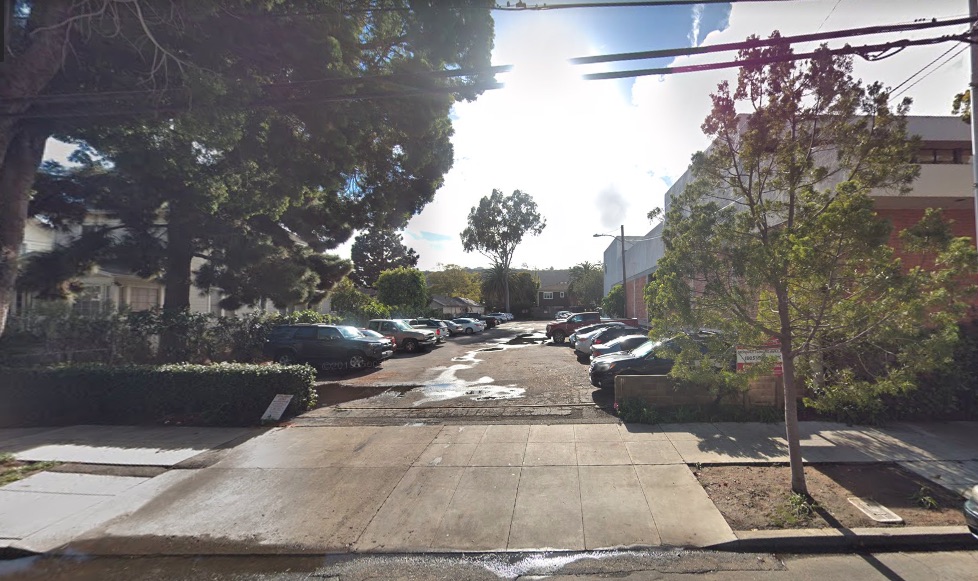Santa Barbara Building Heights Going Up
Big Residential Development on De la Vina a Case in Point

Are readers aware of the large residential real estate development at 825 De la Vina Street where the developer is proposing a four-story structure that runs from property line to property line with no setbacks and no attempt to be sensitive to any architectural or current neighborhood aesthetics? Just imagine what a four-story structure will look like when driving or walking down the De la Vina corridor. Just imagine what it would look and feel like if you were an adjacent or near to neighbor.
Are you aware that City Council has also taken the first steps to increase allowable height of residential buildings to 48 feet from current 45 feet? Soon, we will see five-story buildings sprouting up. The reasoning used by architects and council members and staff for needing this additional height (read additional bulk and scale) is, according to architect Alex Pujo, that “We need to recognize that we have not done a good job with housing … We need to create more housing units, not because the state tells us to do so, but because it is the right thing to do.”
I am aware of the pressures that are upon cities including Santa Barbara to simply wave the white flag and accommodate the requests of developers for insanely high density and huge bulk and scale developments. Yes, I do understand the pressures that ABR [architectural board of review], HLC [historic landmarks commission], and City Council find themselves facing, but these review boards and representatives of the people living here also need to have a backbone and stand up to overreaching development requests made by developers who’s only focus is financial gain.
The reasoning given is that we need housing. Yes, we do need housing. However, we need to balance the need for housing with the need to maintain a quality of life and space. We need to provide housing for the people who need it. And, truth be told, no matter how much more housing we provide, it will never be close to enough.
Also please do not let these developers misguide you. Their projections for costs require expected and anticipated rents to be way above the levels that will make the units in any way affordable to people needing them. To “afford” these units will require 50 percent or more ratios of rent to income. Just to meet the 50 percent rent ratio, a one-bedroom one-bath unit renting for $2,500/month will require a “net” annual income of $60,000 after taking out expected taxes, insurance etc. from the gross income. Do most people looking for an “affordable” one-bedroom unit make $6,000/month gross income? The result will be that these units will be rented by out-of-town owners looking for weekend retreats, not the people who city planners think they are building for.
It is time for the people of Santa Barbara to finally decide what their vision is for the future of our town and what their priorities are for quality of life here. Once built, there is no going back. I know that I am taking a somewhat anachronistic view here, and I do not expect that things can just stay as they are. In defense of the developers, if you have ever tried to renovate or develop any residential housing in this town, and I have, you will know that the city makes things so much more arduous and costly that they become instrumental in the process creating units that end up being unaffordable by those who need them. And, believe me, adding the requirement that 10 percent of the units be “affordable” only increases the income need of the other 90 percent, adding to the problem and providing only a drop in the bucket for covering the real need.
If the city were really committed to providing affordable housing, they might find it better to adjust the zoning of residential properties to limit the ability to build with such density. This, along with zoning amendments that would increase density for affordable housing only, would allow for more land to become available at prices that the city could afford to buy and build affordable housing on. The state cannot mandate the zoning of properties, only the increased density proportionate to the given zoning density. I do not think that the people understand that the vast majority does not own R-3 and R-4 zoned property. The vast majority could force changes that would be advantageous for the people who the city now thinks it is trying to help but totally unable to help for the reasons provided above.
Another possible approach under existent zoning: If the city was willing to pay current owners the value of the property equal to what developers can pay, then Owners would be willing to so sell to the city instead of the developer. Add this additional cost to the cost involved in providing more affordable housing built directly by and owned by the city. The ending cost for such housing would be higher but still nowhere near the cost of the custom units that the developers must design in order to obtain the rents needed for their projects to be profitable. Yes, the city would have to seek additional funds to complete these city owned affordable units and require higher rents than currently allowed with affordable guidelines to make them pencil out, but they could be created by the city and offered at rental rates much lower than otherwise and still end up financially feasible. The city does not have the need for profit that the developer has to price in to be willing to take the risks involved in development.



